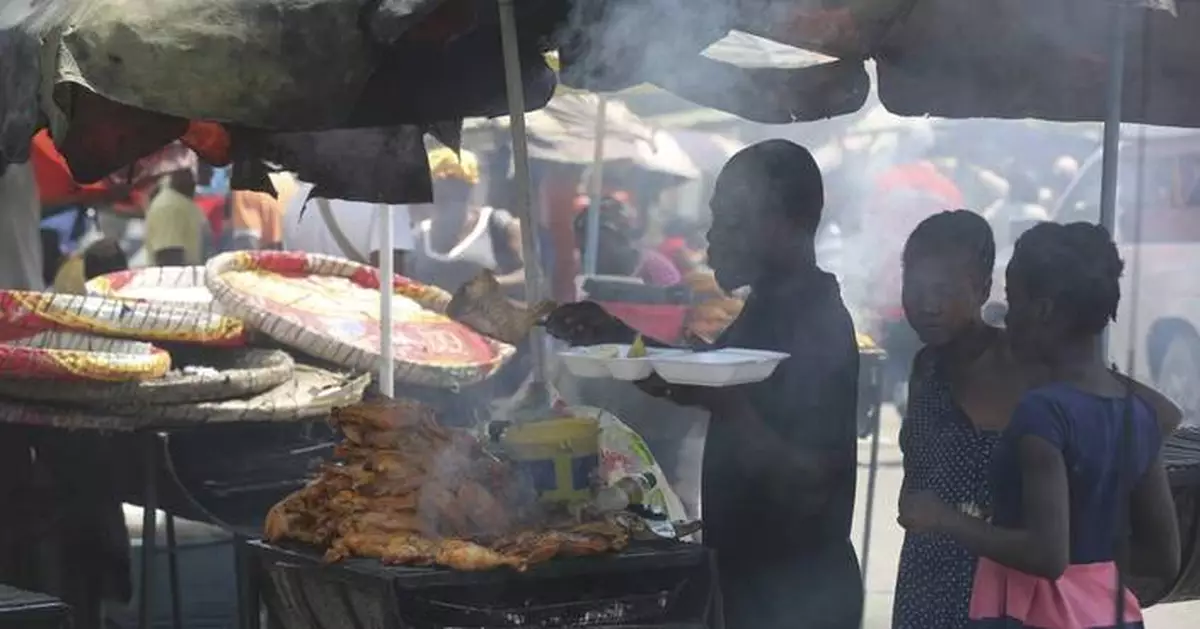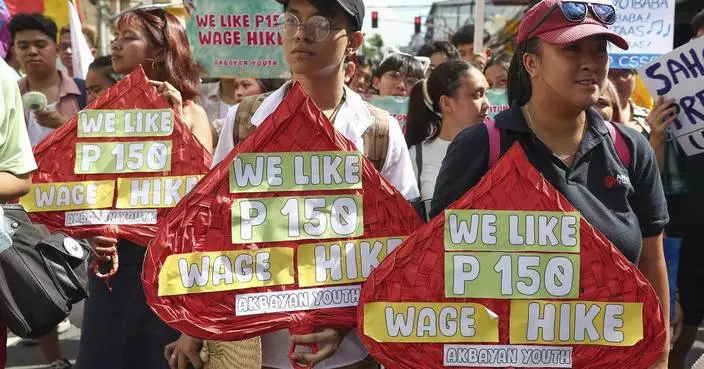PORT-AU-PRINCE, Haiti (AP) — Fresh gunfire erupted Tuesday in downtown Port-au-Prince, forcing aid workers to halt urgently needed care for thousands of Haitians.
Weeks of gang violence have forced some 18 hospitals to stop working and caused a shortage of medical supplies as Haiti's biggest seaport and main international airport remain closed, warned aid workers with The Alliance for International Medical Action, a Senegal-based humanitarian organization.
Click to Gallery
PORT-AU-PRINCE, Haiti (AP) — Fresh gunfire erupted Tuesday in downtown Port-au-Prince, forcing aid workers to halt urgently needed care for thousands of Haitians.
Police take cover during an anti-gang operation next to the National Palace in Port-au-Prince, Haiti, Monday, April 8, 2024. (AP Photo/Odelyn Joseph)
People take cover from gunfire during clashes between police and gangs in the Champs de Mars area next to the National Palace in Port-au-Prince, Haiti, Monday, April 8, 2024. (AP Photo/Odelyn Joseph)
National Police patrol an intersection amid gang violence in Port-au-Prince, Haiti, Monday, April 8, 2024. (AP Photo/Odelyn Joseph)
A vendor sells grilled chicken to customers in Port-au-Prince, Haiti, Monday, April 8, 2024. (AP Photo/Odelyn Joseph)
“The situation is really challenging and affects our movement on a daily basis,” said Antoine Maillard, the organization’s medical coordinator based in Port-au-Prince.
The gang violence has driven about 17,000 people in the capital from their homes. Many are crammed into abandoned schools and other buildings where they often share a single toilet.
Maillard said aid workers were able to reach one of the camps for displaced people on Tuesday, “but there were too many gunshots to provide support.”
He said the health crisis is worsening. It is difficult to find basic medications including antibiotics and antidiarrheals since gang violence has shuttered suppliers. The limited medication available has doubled and even tripled in price.
That means Haitians like 65-year-old Denise Duval are unable to buy needed medication or see a doctor.
“My health right now is not good,” she said, adding that she has high blood pressure and often feels dizzy. “From hearing gunfire all the time, my heart beats a lot.”
Duval is taking care of three grandchildren whose mother migrated to the neighboring Dominican Republic in search of work. The mother sends money when she can, but Duval said it's not enough to buy medication and support the children at the same time.
“We’re living day-by-day and hoping that something will change,” she said as she sat outside her home and washed dishes in a bucket.
Gunfire still echoes daily throughout Port-au-Prince, though the gang violence has somewhat subsided in certain areas since gunmen began attacking key government infrastructure on Feb. 29.
Key roads remain impassible, preventing Haitians like 52-year-old Nadine Prosper from reaching one of the few operating hospitals.
Prosper lost her lower left leg in Haiti's 2010 devastating earthquake, and she’s unable to get the medication she needs.
“I’m still suffering,” she said as she walked back to her house with a cane in one hand and groceries in the other. “When the pain comes, if I don’t have painkillers, that’s the hardest part.”
Haiti’s largest public hospital, the State University Hospital, is among those closed. Located in downtown Port-au-Prince, it has been seized and looted by gangs that also pillaged nearby pharmacies.
While some private clinics and hospitals are operating, they remain inaccessible to the majority of people in a country where 60% of the population earn less than $2 a day.
Dr. Priscille Cupidon, medical activity manager for Doctors Without Borders, said the ongoing fighting resembles a war.
“The country’s deepening political and economic crises have left medical facilities with few resources,” she wrote in an essay published Tuesday. “Our health care system is falling apart.”
Cupidon, who runs a mobile health clinic, said an MSF team visited a neighborhood near the center of Port-au-Prince late last month that it hadn’t been able to access since Feb. 29.
“The medical needs in the area are very high and are only likely to grow now that health care is so limited,” Cupidon said.
Gangs are estimated to control 80% of Port-au-Prince. But ALIMA’s Carlotta Pianigiani said the presence of armed groups is affected all of the city's population.
The violence forced Prime Minister Ariel Henry to announce last month that he would resign once a transitional presidential council is created.
Coto reported from San Juan, Puerto Rico.
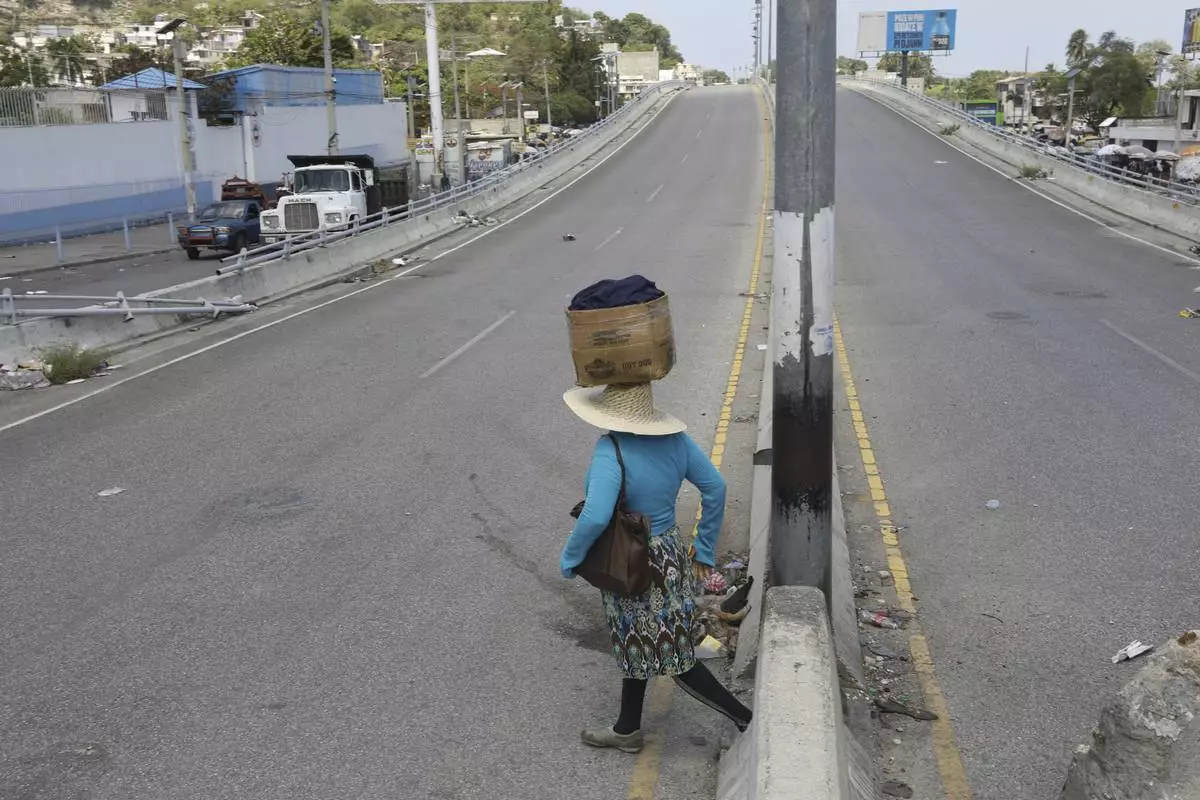
A street vendor crosses a street that is empty due to residents staying home amid gang violence in Port-au-Prince, Haiti, Monday, April 8, 2024. (AP Photo/Odelyn Joseph)
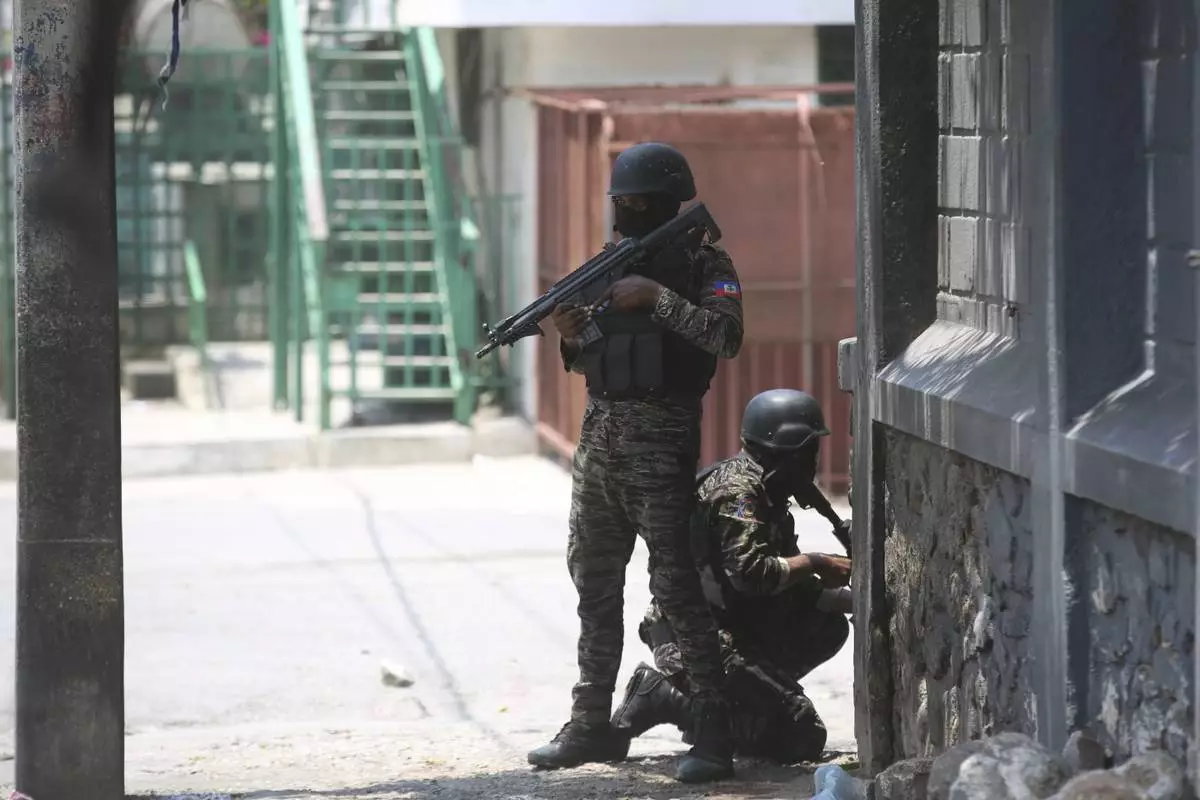
Police take cover during an anti-gang operation next to the National Palace in Port-au-Prince, Haiti, Monday, April 8, 2024. (AP Photo/Odelyn Joseph)
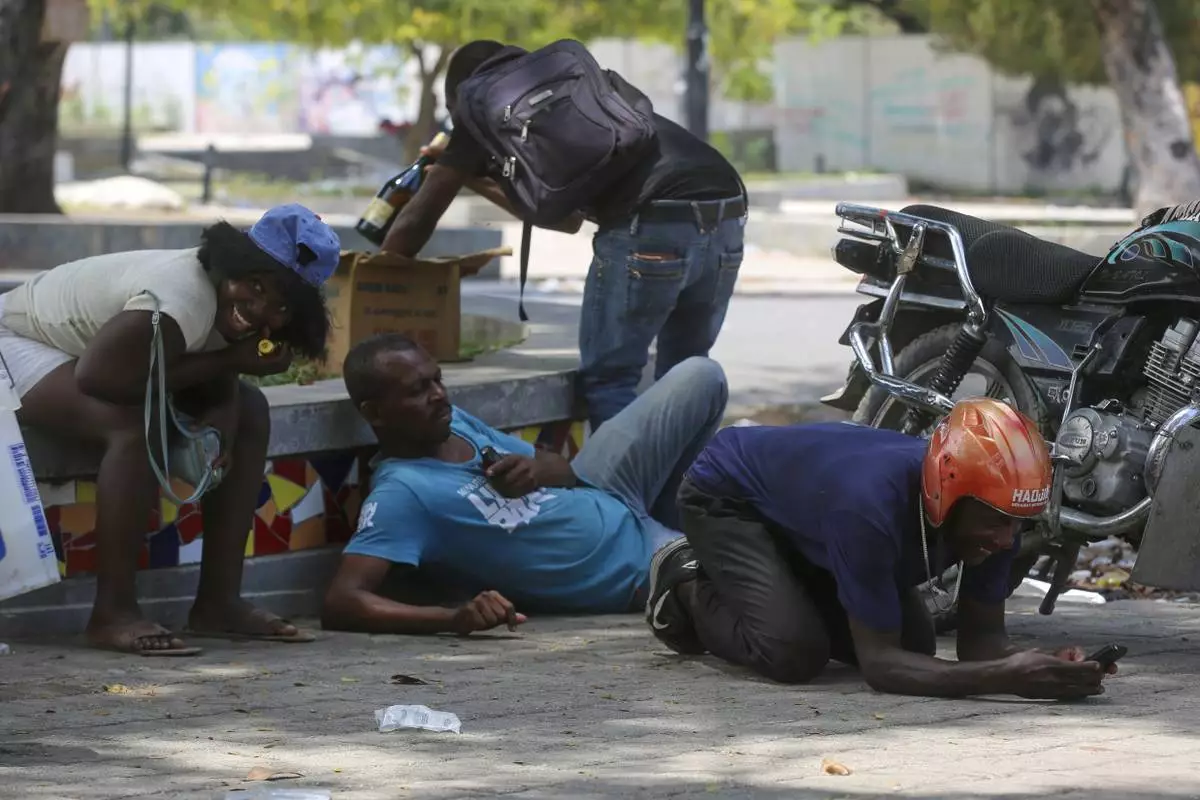
People take cover from gunfire during clashes between police and gangs in the Champs de Mars area next to the National Palace in Port-au-Prince, Haiti, Monday, April 8, 2024. (AP Photo/Odelyn Joseph)
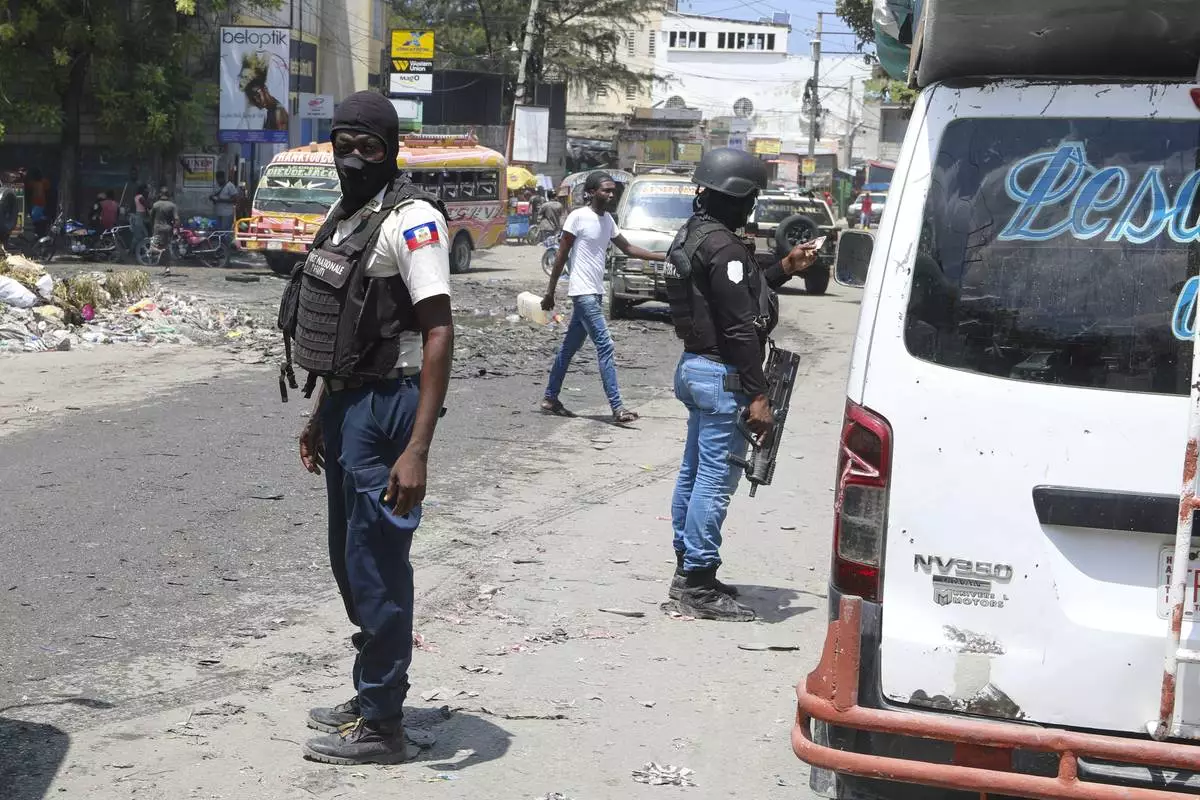
National Police patrol an intersection amid gang violence in Port-au-Prince, Haiti, Monday, April 8, 2024. (AP Photo/Odelyn Joseph)
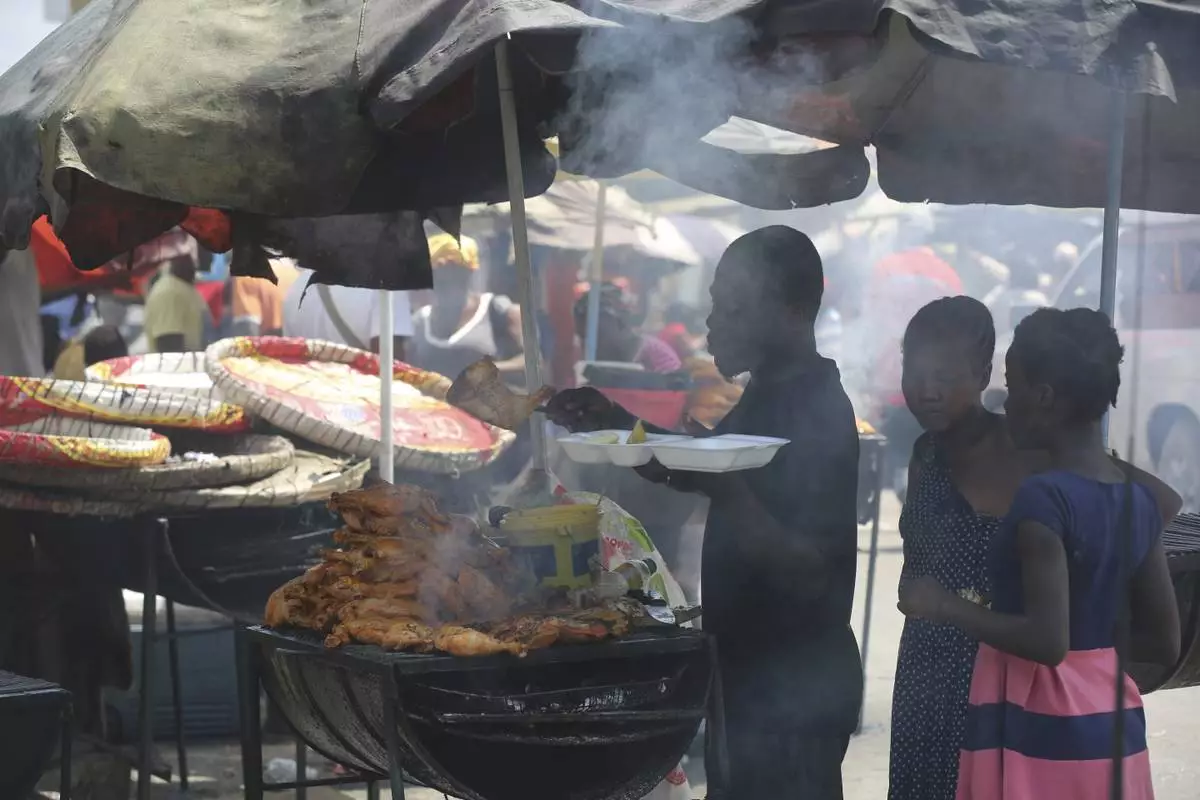
A vendor sells grilled chicken to customers in Port-au-Prince, Haiti, Monday, April 8, 2024. (AP Photo/Odelyn Joseph)
HONG KONG (AP) — Asian markets wobbled in early Thursday trading after U.S. stocks swung to a mixed finish with the Federal Reserve delaying cuts to interest rates.
U.S. futures surged and oil prices were higher.
Tokyo’s Nikkei 225 index opened with a decline, then climbed 0.1% to 38,299.71.
The Japanese yen surged as much as 2% in early Asia hours Thursday, driven by speculations of another round of yen-buying intervention by Japanese authorities and a weaker U.S. dollar following the Fed meeting. Later, the yen reversed its course and erased the previous gains. By midday, the dollar was trading at 156.04 yen, up from 154.91 yen.
“As expected, Japan’s Ministry of Finance, via the Bank of Japan, was back selling U.S. dollars to stabilize the yen. Indeed, the Japanese government is digging into their sizable 1.2-trillion-USD war chest, looking to take profit on the dollar they bought back in 2000," Stephen Innes, managing partner at SPI Asset Management, said in a commentary. He said the hope was to stabilize yen around 155-157 to the dollar.
In South Korea, the Kospi edged 0.1% lower to 2688.80, after official data showed the country’s consumer prices in April reached 2.9% year on year, a slower pace compared to the data in March.
Hong Kong’s Hang Seng index added 2.3% to 18,178.43. Other markets in China remained closed for the Labor Day holiday.
Elsewhere, Australia’s S&P/ASX 200 advanced 0.5% to 7,603.80.
On Wednesday, the S&P 500 fell 0.3% to 5,018.39 after the Fed held its main interest rate at its highest level since 2001, just as markets expected. The index had rallied as much as 1.2% in the afternoon before giving up all the gains at the end of trading.
The Dow Jones Industrial Average rose 0.2% to 37,903.29, and the Nasdaq composite lost 0.3% to 15,605.48.
On the downside for financial markets, Federal Reserve Chair Jerome Powell said out loud the fear that's recently sent stock prices lower and erased traders' hopes for imminent cuts to interest rates: “In recent months, inflation has shown a lack of further progress toward our 2% objective.” He also said that it will likely take "longer than previously expected” to get confident enough to cut rates, a move that would ease pressure on the economy and investment prices.
At the same time, though, Powell calmed a fear swirling in the market that inflation has remained so high that additional hikes to rates may be necessary.
“I think it’s unlikely that the next policy rate move will be a hike,” he said.
The Fed also offered financial markets some assistance by saying it would slow the pace of how much it’s shrinking its holdings of Treasurys. Such a move could grease the trading wheels in the financial system, offering stability in the bond market.
Traders themselves had already downshifted their expectations for rate cuts this year to one or two, if any, after coming into the year forecasting six or more. That's because they saw the same string of reports as the Fed, which showed inflation remaining stubbornly higher than forecast this year.
Powell had already hinted rates may stay high for awhile. That was a disappointment for Wall Street after the Fed earlier had indicated it was penciling in three cuts to rates during 2024.
One report from the Institute for Supply Management said the U.S. manufacturing sector unexpectedly fell back into contraction last month. A separate report said U.S. employers were advertising slightly fewer jobs at the end of March than economists expected.
The hope on Wall Street has been that a cooldown could help prevent upward pressure on inflation. The downside is that if it weakens too much, a major support for the economy could give out.
In energy trading, benchmark U.S. crude ended three days of decline and rose 45 cents to $79.45 a barrel. Brent crude, the international standard, was up 44 cents to $83.88 a barrel.
In currency trading, the euro cost $1.0713, up from $1.0709.
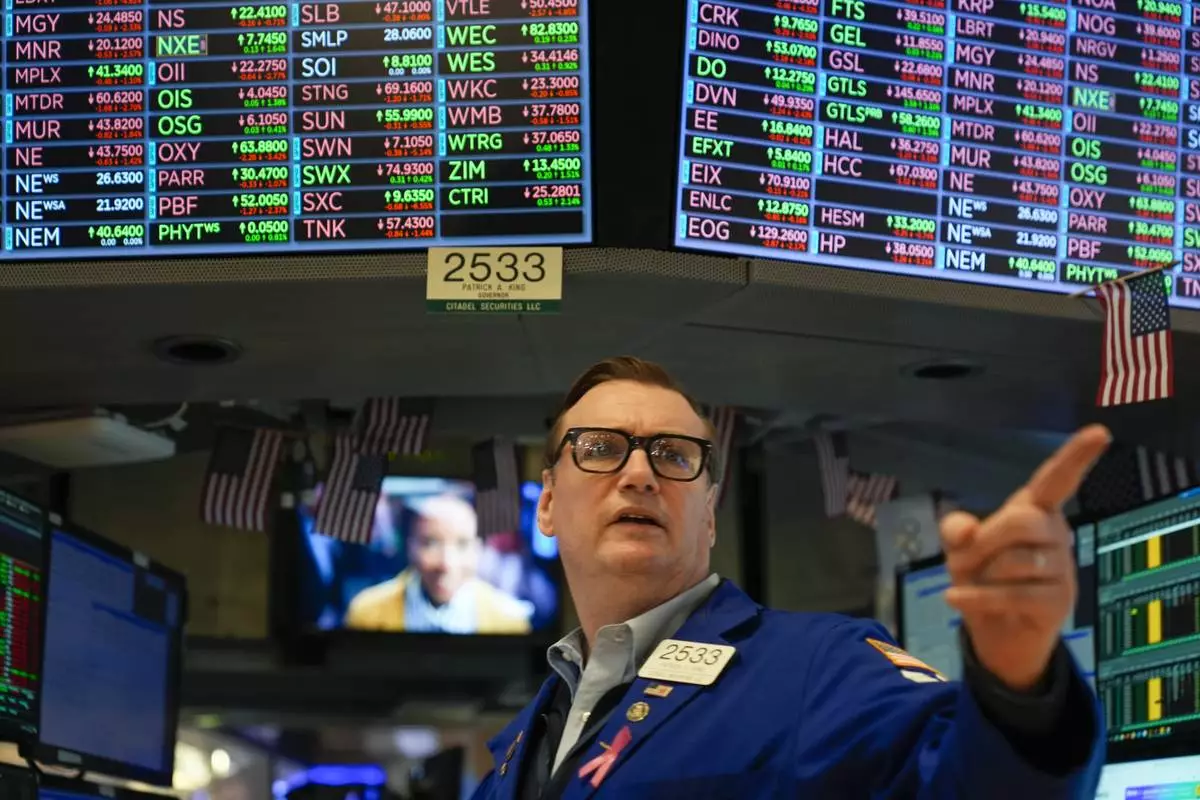
Traders work on the floor at the New York Stock Exchange in New York, Wednesday, May 1, 2024. (AP Photo/Seth Wenig)

A person looks at an electronic stock board showing Japan's Nikkei 225 index at a securities firm Thursday, May 2, 2024, in Tokyo. (AP Photo/Eugene Hoshiko)

A person stands in front of an electronic stock board showing Japan's Nikkei 225 index at a securities firm as pedestrians are reflected on a glass window Thursday, May 2, 2024, in Tokyo. (AP Photo/Eugene Hoshiko)
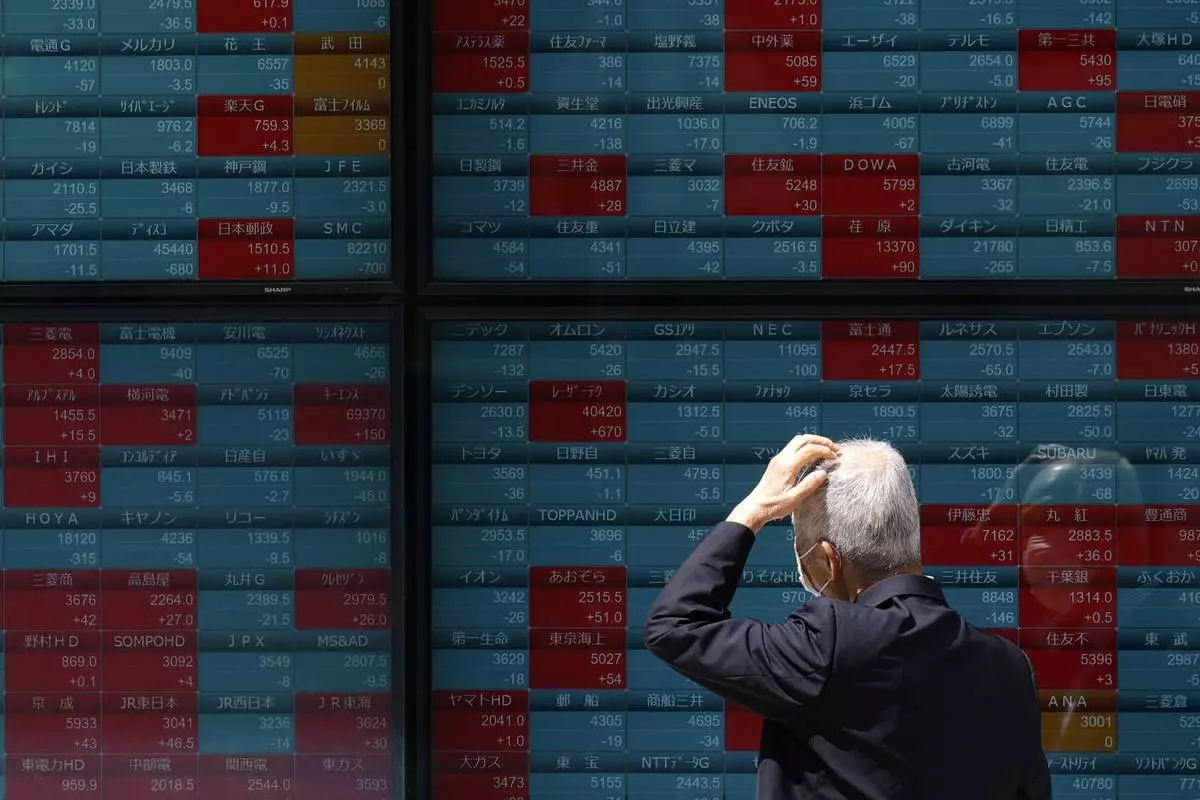
A person looks at an electronic stock board showing Japan's Nikkei 225 index at a securities firm Thursday, May 2, 2024, in Tokyo. (AP Photo/Eugene Hoshiko)

A banner for cruise operator Viking, marking its initial public offering, hangs on the front of the New York Stock Exchange on Wednesday, May 1, 2024 in New York. (AP Photo/Peter Morgan)
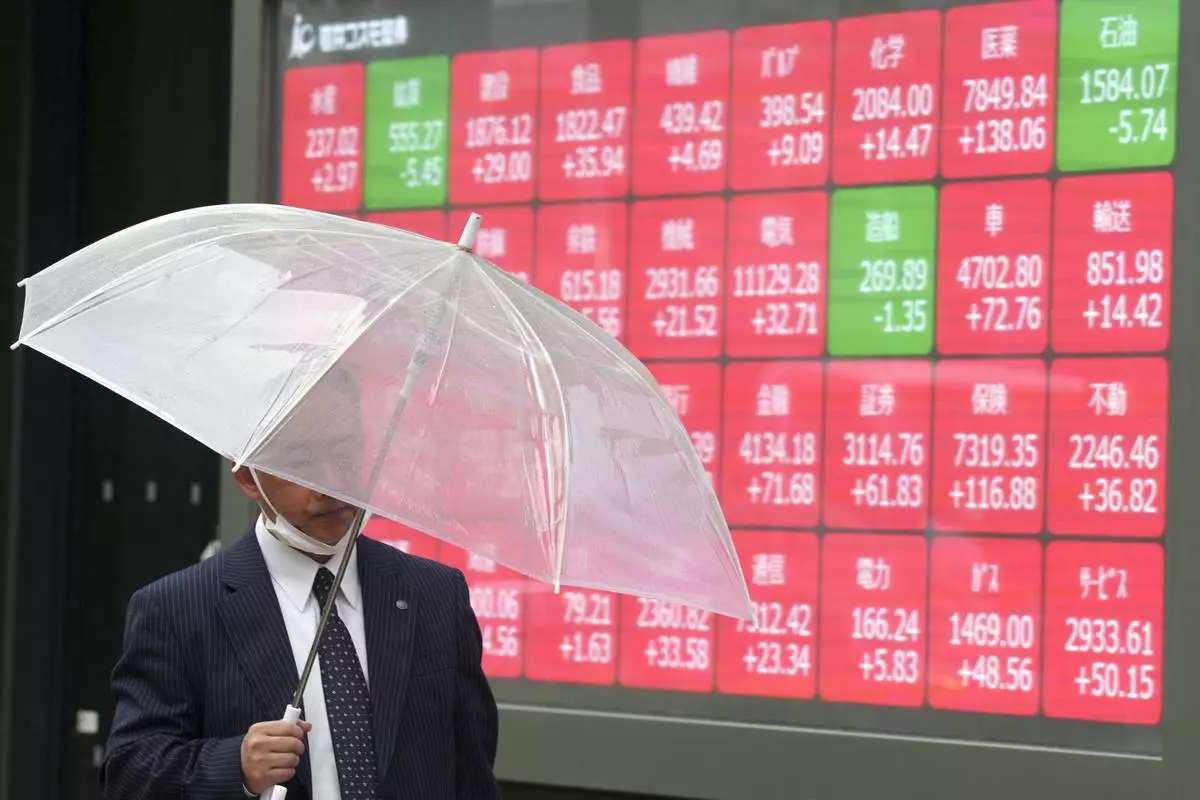
FILE - A person walks in front of an electronic stock board showing Japan's Nikkei 225 index at a securities firm in Tokyo, on April 22, 2024. Asian stocks fell Wednesday, May 1, 2024 with most of the markets in the region closed for a holiday. Meanwhile, U.S. stocks closed out their worst month since September. (AP Photo/Eugene Hoshiko, File)
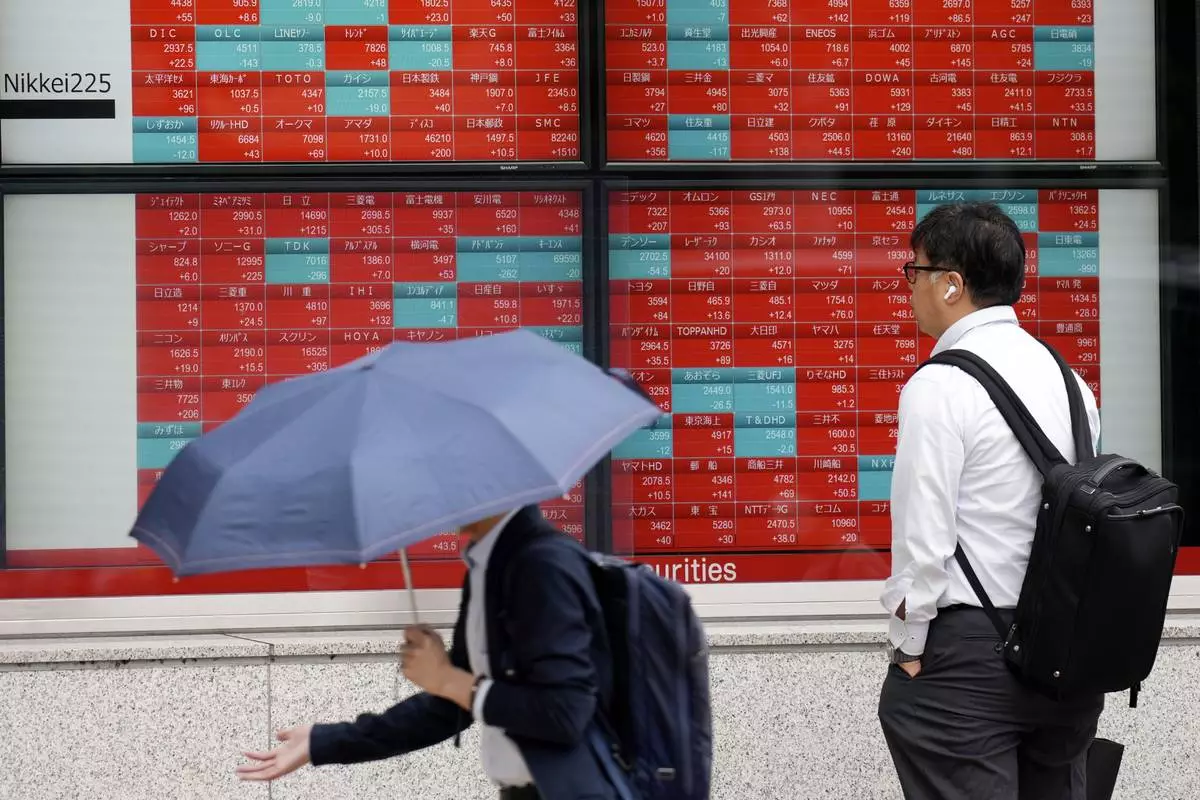
FILE- A person looks at an electronic stock board showing Japan's stock prices at a securities firm in Tokyo, on April 30, 2024. Asian stocks fell Wednesday, May 1, 2024 with most of the markets in the region closed for a holiday. Meanwhile, U.S. stocks closed out their worst month since September. (AP Photo/Eugene Hoshiko, File)







